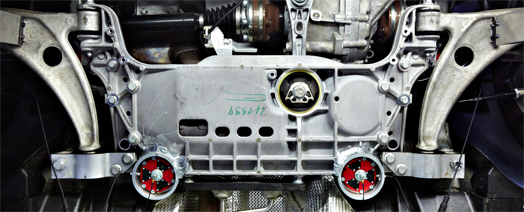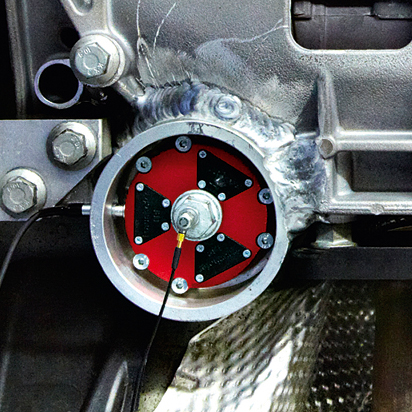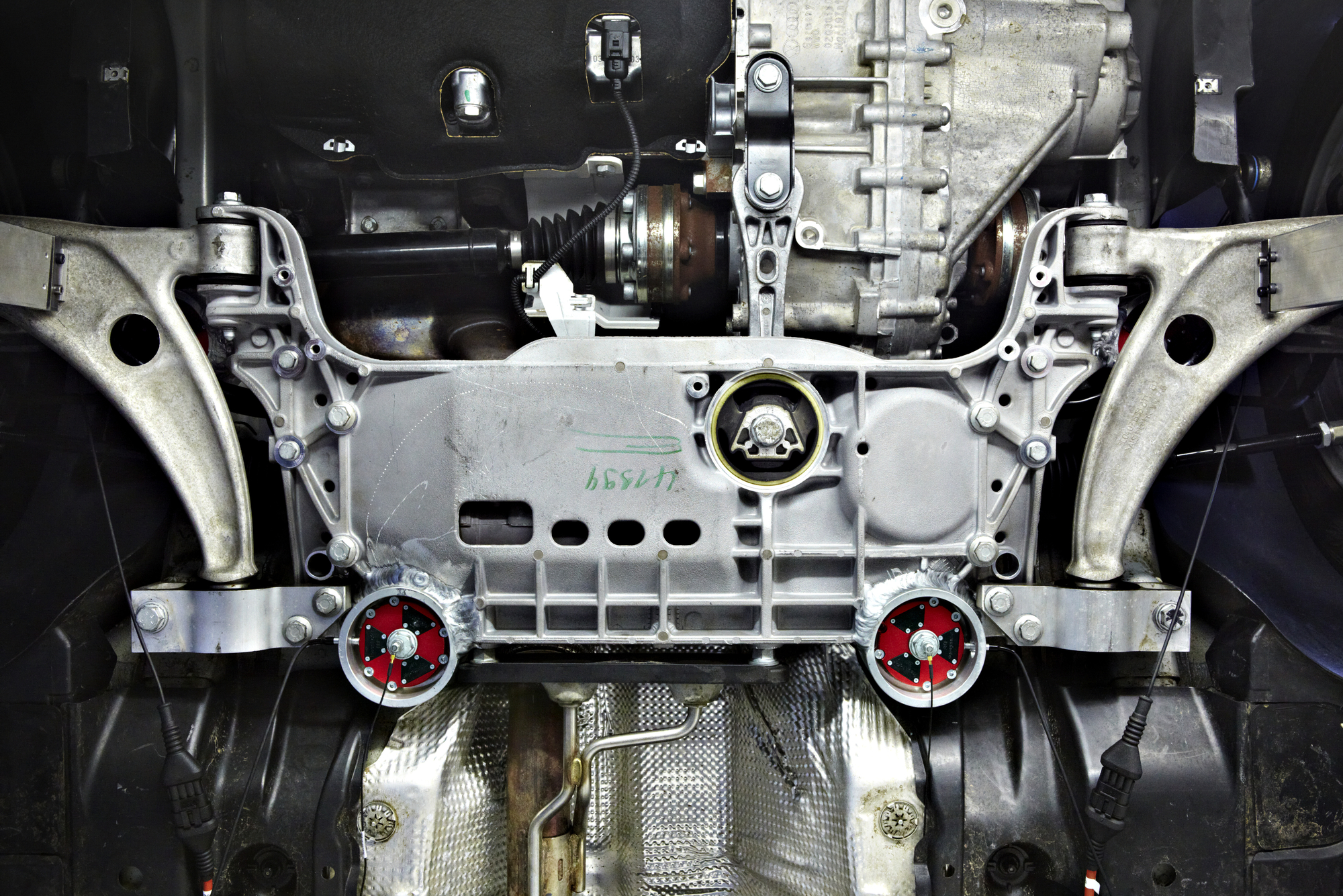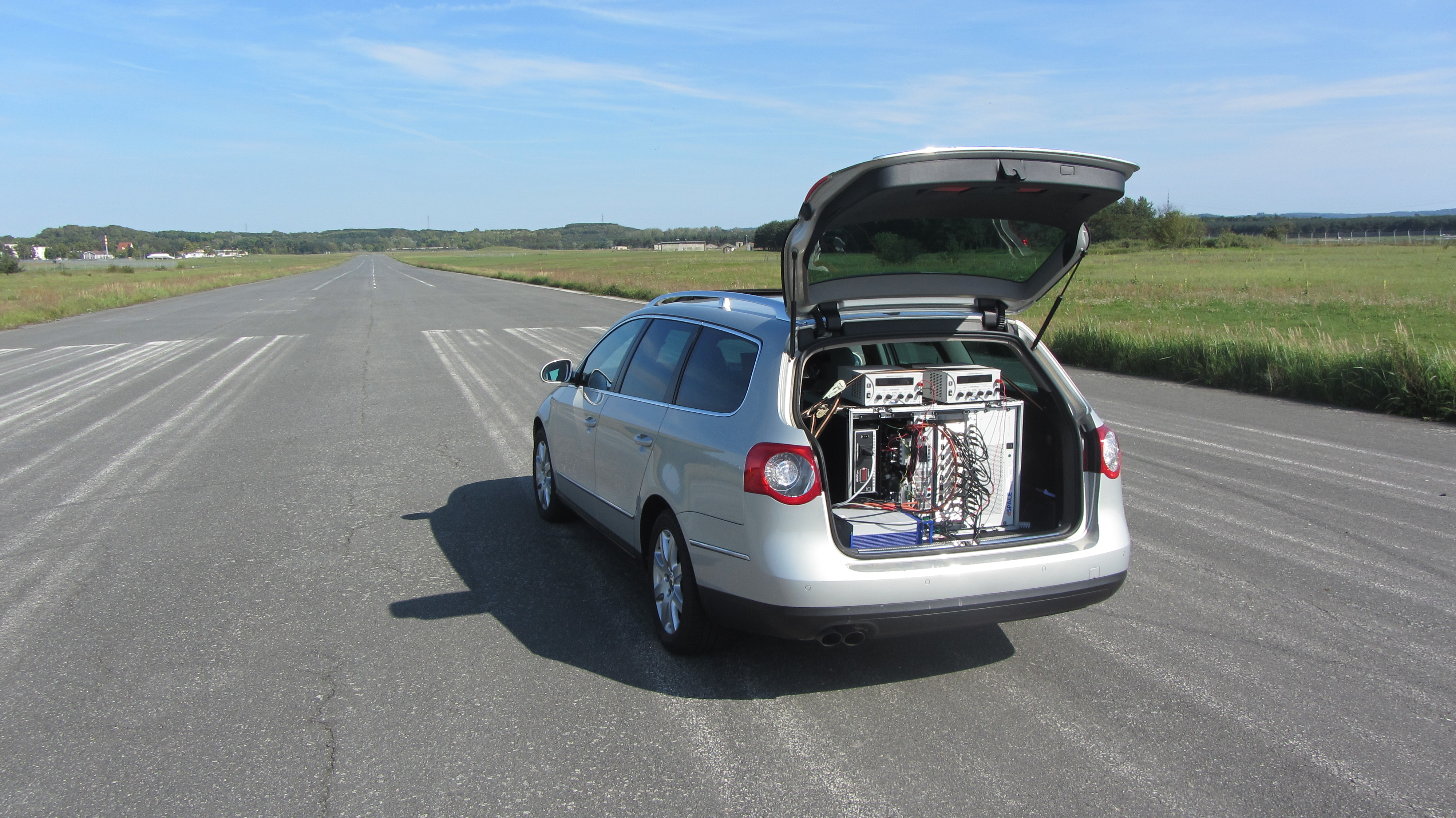Amongst other factors, the interior acoustics of a vehicle is influenced by excitations originating from the road surface. The tire rolling noise is transmitted essentially through tires and chassis components to the vehicle body work. Reduction of the sound pressure level in the car interior can be expected, if chassis components are decoupled from the bodywork by means of active mountings.
Active chassis mounts
Active mounts for use in the vehicle
With the framework of the FIEELAS project of the German Federal Ministry of Education and Research (BMBF), active mounts for decoupling of chassis components from the vehicle body were set up at Fraunhofer LBF. The purpose of these active mounts was to reduce the dynamic loads transmitted from the road surface and positively influence the vibratory behavior and interior acoustics of the vehicle. At the outset of the project, detailed tests were conducted to evaluate the vehicle's vibratory behavior and interior acoustics, and the measurement data obtained was used to develop a numerical model. This model subsequently enabled various concepts to be evaluated, design parameters for the active mount to be determined, the control system to be tested, and the potential performance to be assessed. A design concept was designed and implemented, consisting of an active mount made up of 2x3 piezo ceramic actuators arranged as a cascade on two levels. The mount is designed for a stroke of 90 μm and a locking force of 4.2 kN.
The static and dynamic properties of the mounts were determined by extensive laboratory studies and their suitability for use in a vehicle analyzed. After determining that the active mounts fulfill all requirements, four active mounts were installed in a test vehicle. Compared to laboratory devices, the amplifiers developed at Fraunhofer LBF are very compact and cost-efficient, whilst still offering adequate performance. A modular structure in conjunction with a flexible circuit board design provides for high adaptability and a wide range of options, and enhances repeatability by eliminating free wiring. Auxiliary voltages can be obtained directly from the vehicle's on-board electrical system; a flanged housing facilitates installation of the amplifier. Apart from the amplifiers, signal processing and control circuits were also prepared for use in the vehicle and connected to the vehicle's wiring system. Control parameters and sensor positions were optimized through tests on a test facility under repeatable conditions. This enabled the number of necessary test runs to be reduced to a minimum.
The test vehicle with active mounts was tested in detail under real-life driving conditions on a test track. During the trials various driving maneuvers were conducted, such as coasting down from 80 to 20 kph, cruising at constant speed, cornering and braking, and travelling on a gravel track, and the load-bearing capability of the mounts was tested. These tests validated the performance of the active mounts and successfully demonstrated their effectiveness.
 Fraunhofer Institute for Structural Durability and System Reliability LBF
Fraunhofer Institute for Structural Durability and System Reliability LBF


